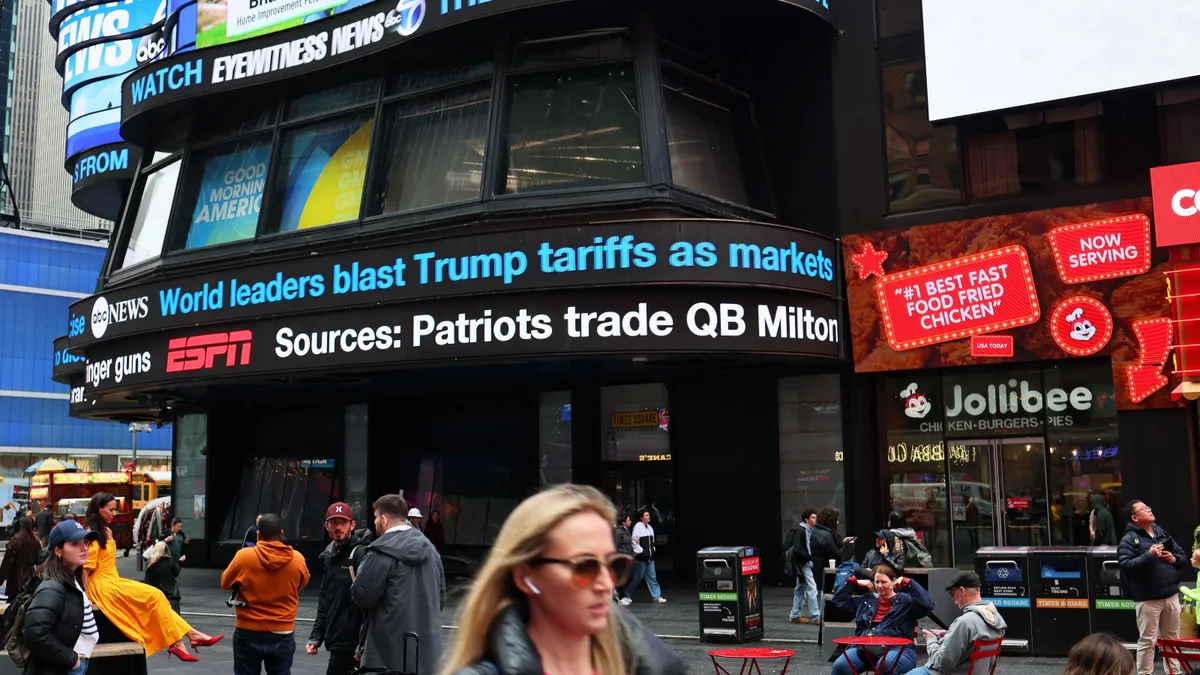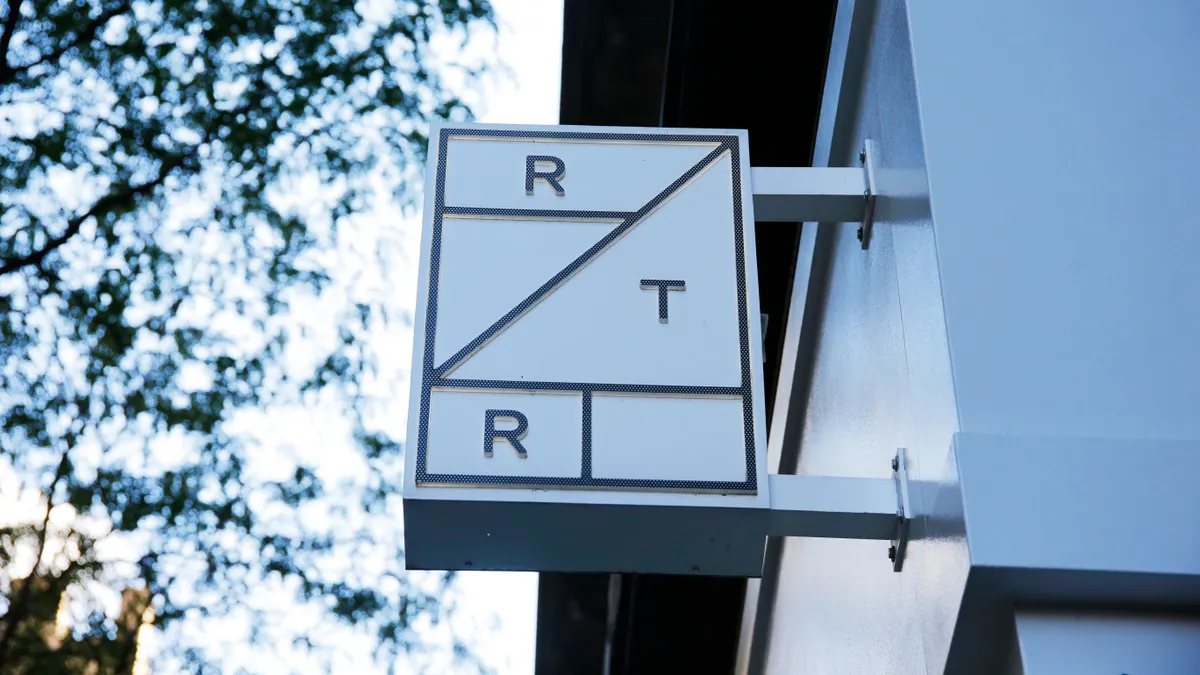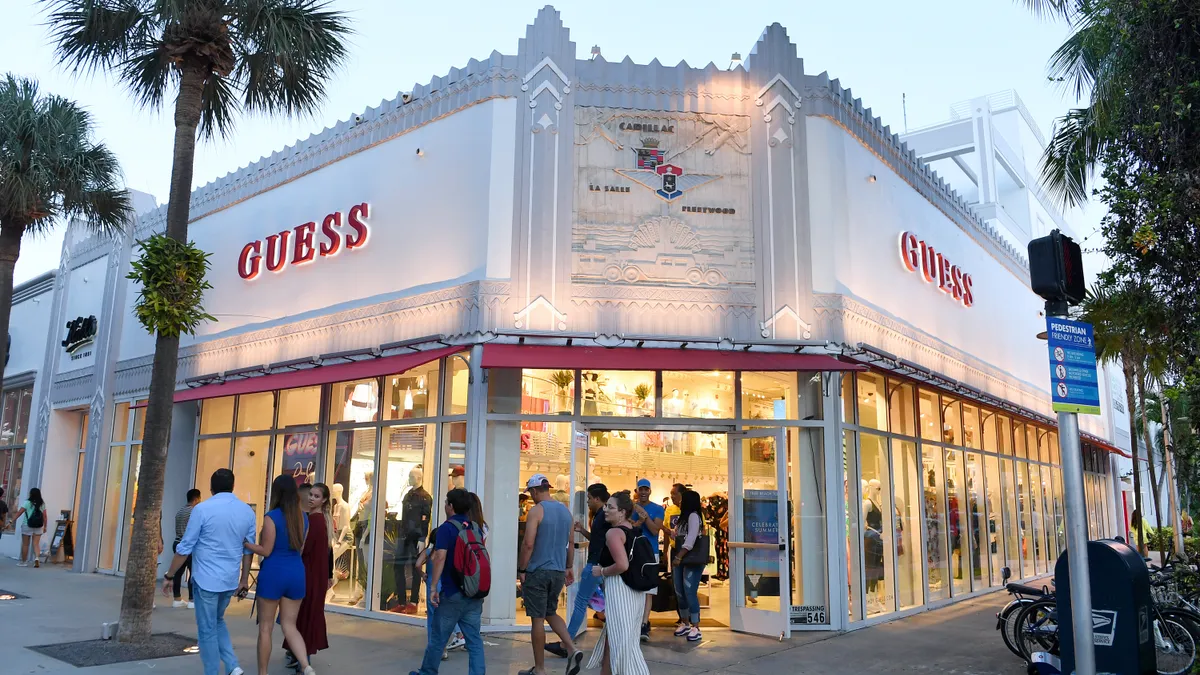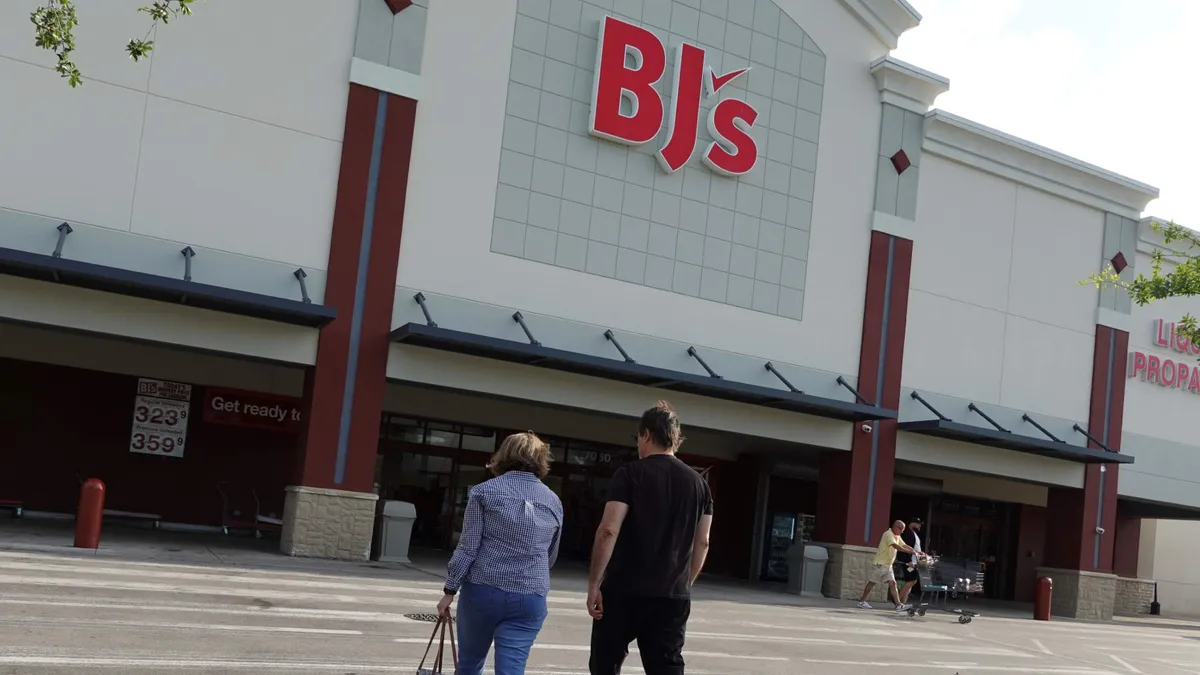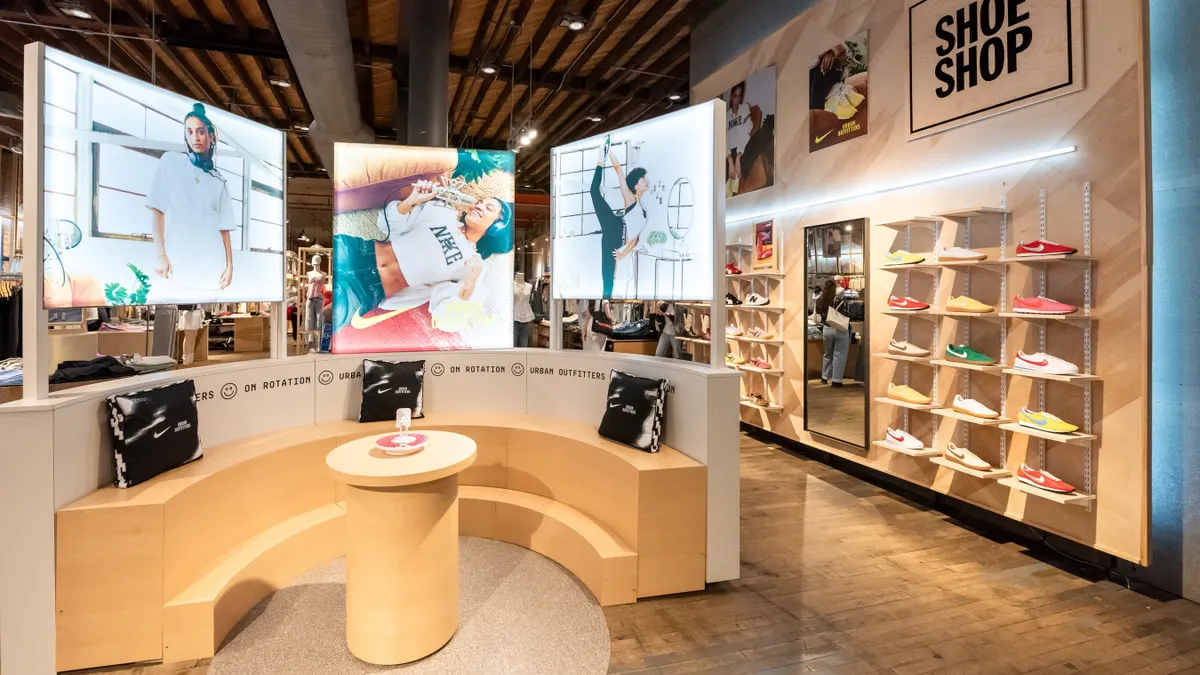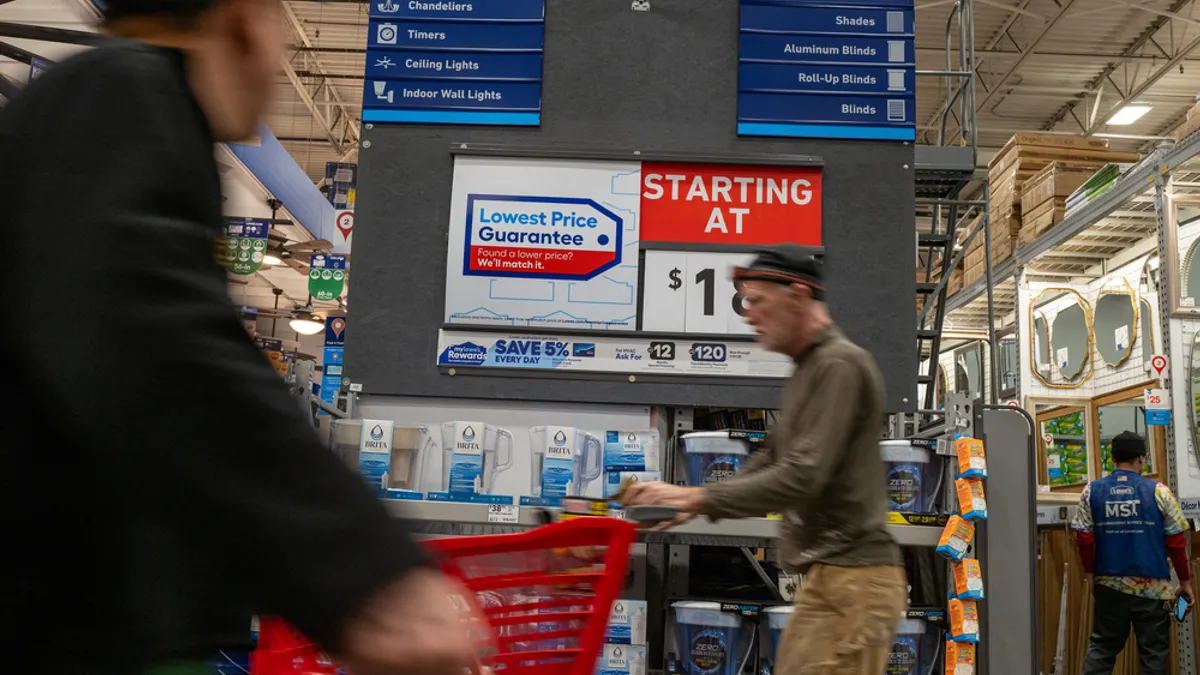President Donald Trump last week came out with a posterboard and a message: tariffs are here.
On Saturday, the United States instituted a 10% baseline tariff on all countries. Higher rates on key trading partners, including the European Union, China, Mexico and Canada, are set to go in effect April 9.
For months, anxiety about the planned tariffs and its impact on prices have wreaked havoc on consumer sentiment measures and already altered shopping behaviors.
The stock market plummeted following the announcement, exacerbating worries. And over the weekend, JPMorgan’s chief economist said the likelihood of a recession increased to 60%.
In anticipation of higher prices, 3 in 5 consumers were already adjusting their budgets in March, according to a CNET survey. An EY survey from last month also found that price sensitivity is No. 1 purchase consideration. That price sensitivity is likely to intensify as the latest tariffs take effect.
As consumers seek cheaper products, customer loyalty is at stake. CX leaders have a role to play in ensuring interactions with the company are respectful of customers’ economic reality while encouraging loyalty with relevant experiences.
“It sounds counterintuitive, but I think that this is a perfect opportunity for organizations to really lean into customer experience,” said Leah Leachman, senior director analyst at Gartner. “Not only is it something that can bring value to their organization, but amidst a time where there's so much chaos and ambiguity, this is our practice or capability that's going to help increase confidence and create a sense of calm for customers.”
How consumer behavior changes
Consumer behavior varies with inflation and economic anxiety. Some consumers decide to trade down, seeking cheaper alternatives, while others move up expensive purchases with plans to spend less in the future.
One thing is clear, however: loyalty is at risk.
More than three-quarters of consumers globally are changing their purchase behavior in response to price increases, a March EY survey found. For many consumers that means switching to private-label products.
“Consumers are fatigued,” said Rob Holston, EY Global and Americas consumer products sector leader. “They're changing their shopping behaviors. They're opting out of established brands, moving into private-label or store brands and staying there. … You still want to make sure your kids have french fries or tater tots, but there might be a different brand of tater tots or french fries in order to satisfy the family needs.”
Consumers have already felt the impact of inflation and are growing less tolerant.
“There's a lot of people who are going to leave these brands because they're fatigued about the price increase or they feel abused a bit in that pack sizes have shrunk, pricing has gone up,” Holston said. “They feel like gaming has been going on, and so they're making some different choices.”
Even when an economic downturn subsides, consumers don’t always return to the brand names they once purchased, Holston said. That makes keeping loyalty all the more important now.
The CNET survey also found that U.S. consumers are at the same time feeling pressured to make purchases — especially big-ticket electronic products — before prices increase from tariffs. Two in five felt pressure to get those purchases in before prices rise, while the same rate were cutting back on nonessential spending like dining and travel.
The role of customer experience amid tariffs
Amid high prices, customer experience can be a differentiator. While companies may not have control over prices, they do have control over aspects of the experience they offer customers.
“Maybe we know that price sensitivity is not going to go away, and maybe we can't change prices, but what are the things that we can change? We can change how we eliminate friction from the journey and provide confidence in decisions,” Leachman said.
The more financially stressed consumers become, the more susceptible they become to decision fatigue and analysis paralysis.
“It feels like every decision you make is a little bit more risky,” Leachman said. “The money that you have, it's even more limited. So you want to make the best choice and you don't want to regret that decision either.”
While there is plenty of information at consumers’ fingertips to influence their decisions, it doesn’t always make decisions easier, Leachman said, Instead, it’s up to brands to understand what is important to their target customers and highlight factors that make consumers more confident in their purchase.
The key is to accentuate that value to customers, experts said. If prices rise across the board, a brand needs to show how what it is offering differs from the next brand.
“To be clear, that’s not about focusing on price — it’s about emphasizing all the benefits customers derive from your existing offering, no matter what the price point,” Jon Picoult, founder and principal of Watermark Consulting, said in an email.
It’s also critical that CX leaders are cognizant of how their customers are feeling. That includes understanding what’s causing them hesitation and then adjusting the customer experience so it will resonate with target clientele.
Picoult offered the example of Hyundai during the 2007 to 2009 recession. The car manufacturer realized that people weren’t buying cars because they were afraid they would buy a car one week only to lose their job the following week.
“Hyundai’s ‘Assurance’ program gave buyers a guarantee that they could return their vehicle within one year of purchase, no questions asked, if they got laid off from their job,” Picoult said. “The program — because it capitalized on relevance — was far more effective than the traditional incentives other car makers employed at the time, such as bigger rebates and better financing deals.”



